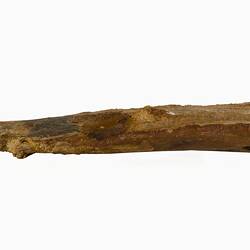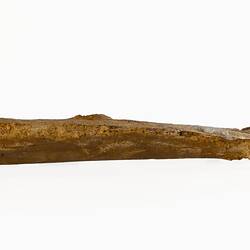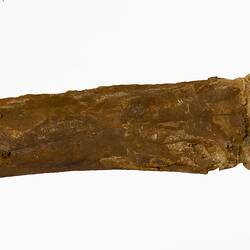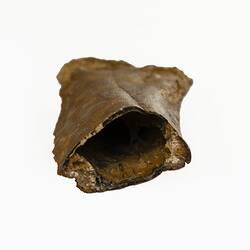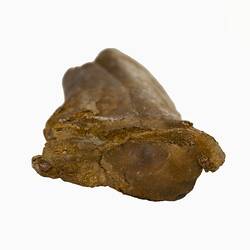Summary
This fossil preserves the shoulder region of a humerus (wing bone) belonging to a pelagornithid bird. These large, pelican or albatross-like birds roamed the skies until their extinction about two million years ago. This specimen was discovered by Ross Wilkie at Beaumaris beach, near Melbourne. It is the only pelagornithid humerus yet found in Australia.
Pelagornithids are the largest flying birds ever to evolve, with wingspans that could have exceeded 6 metres. The size of this humerus suggests it is from a pelagornithid that had a wingspan of at least 4.9 metres. They are sometimes known as bony-toothed birds, due to the unusual tooth-like spikes on their beaks, thought to be adaptations for gripping wriggling prey such as squid.
Specimen Details
-
Taxon Name
-
Date Identified
/12/2020
-
Identified By
Dr Erich M. Fitzgerald - Museums Victoria
-
Number Of Specimens
1
-
Category
-
Scientific Group
-
Discipline
-
Collecting Areas
-
Type of Item
Taxonomy
-
Kingdom
-
Phylum
-
Subphylum
-
Class
-
Order
-
Family
Geospatial Information
-
Continent
-
Country
-
State
-
District
-
Epoch
Late Miocene - Early Pliocene

